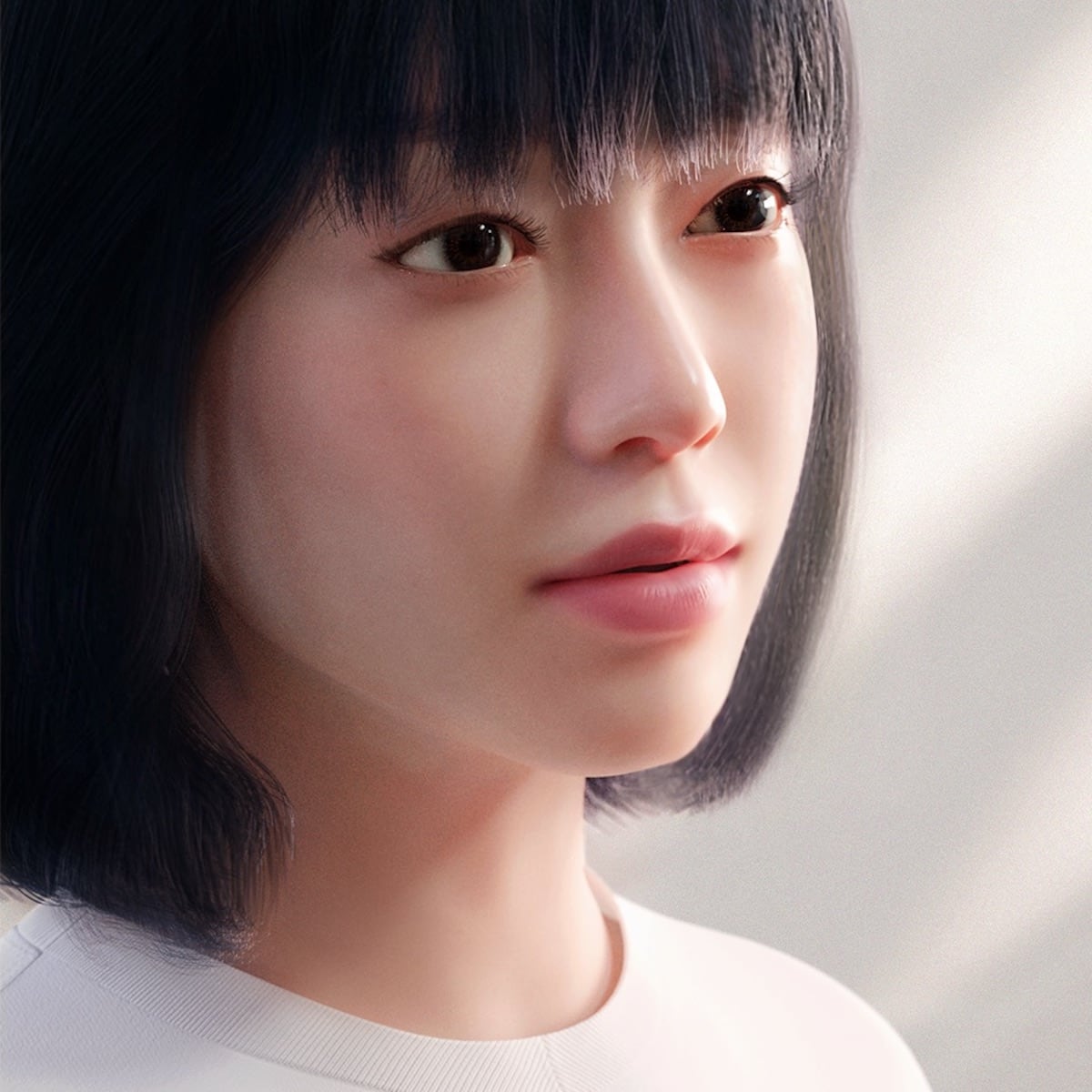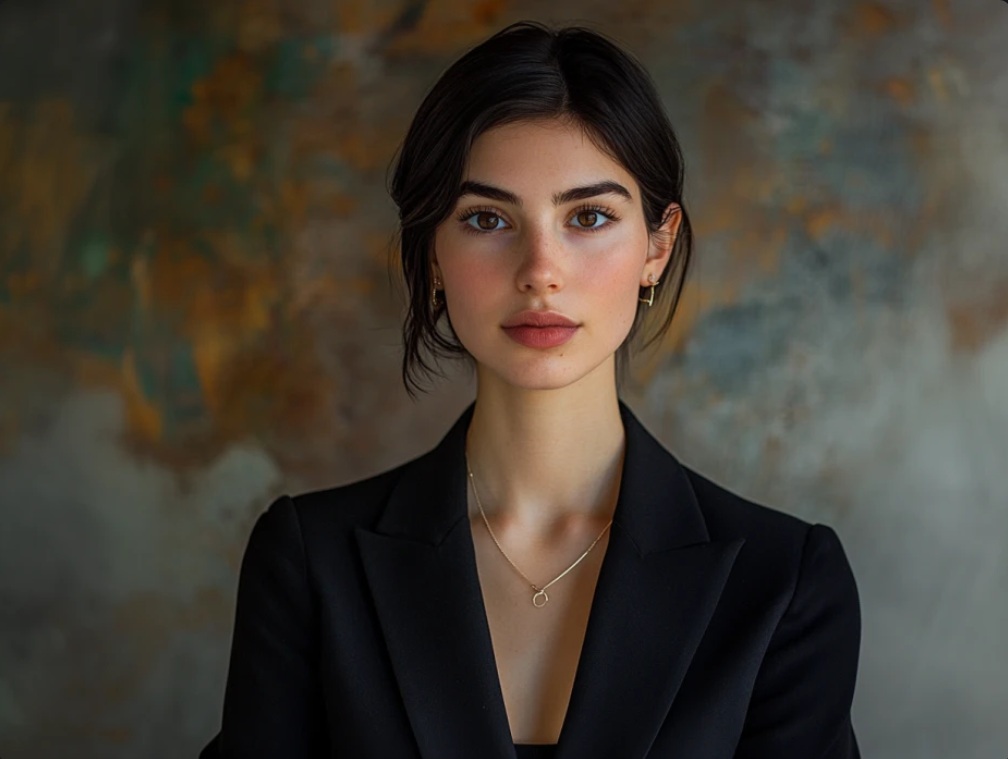[ENGLISH BELOW]
Năm 2025, người mẫu AI – những nhân vật kỹ thuật số được tạo bởi trí tuệ nhân tạo (AI) hoặc công nghệ 3D – đang thay đổi ngành tiếp thị thời trang toàn cầu. Họ thu hút hàng triệu người theo dõi trên mạng xã hội, làm đại sứ thương hiệu, xuất hiện trong tạp chí, livestream bán hàng, và thậm chí tổ chức sự kiện thời trang ảo. Từ sàn diễn kỹ thuật số của Prada đến chiến dịch quảng cáo tại Việt Nam, người mẫu AI mang lại cơ hội sáng tạo nhưng cũng đặt ra câu hỏi về đạo đức, việc làm, và tính chân thực. Bài viết này phân tích cách người mẫu AI được ứng dụng trong tiếp thị, dựa trên dữ liệu xác thực, để làm rõ lợi ích, thách thức, và triển vọng của chúng vào năm 2025.
Nội dung bài viết
Khi người mẫu AI từ viễn tưởng thành xu hướng thực tế
Lợi ích vượt trội của người mẫu AI
Xu hướng tương lai: Người mẫu AI trở thành “người dẫn chuyện”
Kết luận: Người mẫu AI – Công cụ chiến lược cho thương hiệu
Khi người mẫu AI từ viễn tưởng thành xu hướng thực tế
Sự xuất hiện của Lil Miquela năm 2016 đã đánh dấu bước ngoặt cho người mẫu AI. Được tạo bởi Brud, Miquela nhanh chóng trở thành hiện tượng với 2.7 triệu người theo dõi trên Instagram (@lilmiquela) tính đến tháng 5/2025. Cô hợp tác với Prada trong chiến dịch Xuân Hè 2018, xuất hiện trong quảng cáo Calvin Klein năm 2019, và kiếm khoảng 11.7 triệu USD trong năm 2019, theo Forbes. Thành công của Miquela đã mở đường cho hàng loạt nhân vật AI khác.
 |
(Nguồn: Prada Launches Instagram GIFs With Help From a Fictional It Girl – Vogue)
(Nguồn: How Virtual Influencers Can Mean Real Sales – Forbes)
Làn sóng này lan rộng sang châu Á với Imma, một người mẫu AI Nhật Bản, nổi bật trong các chiến dịch của Vivo và thời trang cao cấp, theo Vogue Business. Imma tận dụng công nghệ 3D để xuất hiện trong video và hình ảnh chân thực, thu hút hàng trăm nghìn người theo dõi. Tại châu Âu, Aitana López, một nhân vật AI Tây Ban Nha, đạt gần 1 triệu người theo dõi trên Instagram, đại diện cho các thương hiệu nội y và thời trang, theo The Guardian. Aitana được tạo để đáp ứng thị hiếu thẩm mỹ cụ thể, minh chứng cho khả năng tùy chỉnh của AI.
(Nguồn: Imma Gram – Virtual Humans)
Theo Deloitte, thị trường influencer AI toàn cầu dự kiến tăng trưởng mạnh, với 80% thương hiệu thời trang tích hợp AI vào tiếp thị từ 2023 đến 2025. Sự tăng trưởng này được thúc đẩy bởi công nghệ như Runway ML và Midjourney, cho phép tạo nhân vật AI chi tiết, từ nếp da đến chuyển động tóc, theo Business of Fashion. Những bước tiến này đã biến người mẫu AI từ ý tưởng viễn tưởng thành công cụ tiếp thị thiết yếu.
Lợi ích vượt trội của người mẫu AI
Người mẫu AI mang lại nhiều giá trị cho các thương hiệu, dù kèm theo một số tranh cãi:
- Tiết kiệm chi phí: Chi phí cho chiến dịch dùng người mẫu AI thấp hơn 50-70% so với người thật, do không cần studio, trang điểm, hay di chuyển, theo Color Experts. Ví dụ, Zara áp dụng AI để tạo hình ảnh sản phẩm năm 2024, giảm thời gian và chi phí sản xuất, theo Business of Fashion. Người mẫu AI cũng hoạt động 24/7, phù hợp cho livestream bán hàng hoặc chiến dịch đa nền tảng.
(Nguồn: Harnessing The Power of AI in Distribution Operations – McKinsey)
(Nguồn: Zara’s Innovation: AI for Retail – CTO Magazine)
 |
- Kiểm soát hình ảnh: Được lập trình sẵn, người mẫu AI tránh các rủi ro như scandal hay phát ngôn ngoài ý muốn. H&M sử dụng 30 người mẫu AI năm 2025 để đảm bảo sự nhất quán trong chiến dịch toàn cầu, theo CNN. Điều này đặc biệt quan trọng trong các thị trường nhạy cảm về văn hóa.
(Nguồn: AI Models Might Just Be In Fashion Now – Digital CxO)
 |
- Tùy biến linh hoạt: Thương hiệu có thể tạo người mẫu AI phù hợp với sắc tộc, độ tuổi, hoặc thị hiếu từng thị trường. Gucci dùng AI để tạo nhân vật ảo cho sự kiện Gucci Garden trên Roblox năm 2021, thu hút 19 triệu lượt truy cập, theo WWD. Tính linh hoạt này giúp thương hiệu tiếp cận đa dạng khách hàng mà không cần tuyển người mẫu thực.
(Nguồn: Gucci Garden on Roblox – Gucci Official Site)
Tuy nhiên, lợi ích này không phải không có thách thức. Levi’s bị chỉ trích năm 2023 khi dùng người mẫu AI để tăng tính đa dạng, bị xem là thiếu chiều sâu văn hóa, theo Vogue Business. Một vụ kiện tại Mỹ năm 2022 cũng nêu vấn đề dùng hình ảnh người mẫu thực để tạo AI không phép, theo TechCrunch.
(Nguồn: AI Models Are Here. Can They Actually Improve Fashion Representation? – Vogue Business)
Xu hướng tương lai: Người mẫu AI trở thành “người dẫn chuyện”
Người mẫu AI đang vượt xa vai trò quảng cáo truyền thống. Họ trở thành KOL, MC, hay đại sứ phi lợi nhuận, nhờ công nghệ ngày càng tiên tiến. Luna AI (Mỹ) và Noonoouri (Đức) tham gia talkshow ảo và sự kiện metaverse, theo Jumpstart Magazine. Những nhân vật này sử dụng AI ngôn ngữ tự nhiên để tương tác chân thực, mở rộng phạm vi ứng dụng.
(Nguồn: Virtual Influencer Noonoouri Lands Record Deal. Is She The Future? – LinkedIn Pulse)
 |
Tại Việt Nam, Vi An, một người mẫu AI do Viettel phát triển, đã xuất hiện tại Hội nghị Di động Thế giới (MWC) 2024, trò chuyện thân thiện với khách tham quan, theo Tuổi Trẻ. Vi An được thiết kế để hỗ trợ tiếp thị, tư vấn sản phẩm, và tương tác khách hàng, tận dụng công nghệ AI của Viettel, như Cyber Callbot và Text-to-Speech (Viettel AI). Cùng với Vi An, Hạ Vy AI, một nhân vật giả định, có thể xuất hiện trong các chiến dịch thời trang nội địa, phản ánh xu hướng cá nhân hóa tại Việt Nam.
(Nguồn: Người Ảo AI của Viettel Telecom Giao Tiếp Bằng Mọi Thứ Tiếng Ở MWC 2024 – Viettel Family)
Theo McKinsey, các ngành thời trang cao cấp, mỹ phẩm, và điện tử sẽ dẫn đầu trong việc dùng người mẫu AI, đặc biệt ở các chiến dịch quốc tế. Tại Việt Nam, thị trường AI dự kiến đạt 1.52 tỷ USD vào năm 2030, với tốc độ tăng trưởng 15.8% mỗi năm, theo OpenGov Asia. Viettel, với các giải pháp như CAMEx tại ICLR 2025, đang dẫn đầu trong việc mở rộng quy mô AI, theo Hải Quan Online.
(Nguồn: Vietnam Artificial Intelligence Market – Markets and Data)
(Nguồn: Viettel AI Làm Chủ Phương Pháp Mở Rộng Quy Mô AI Gấp 5 Lần – Hải Quan Online)
Kết luận: Người mẫu AI – Công cụ chiến lược cho thương hiệu
Người mẫu AI, từ Lil Miquela đến Vi An của Viettel, đã trở thành công cụ quan trọng trong tiếp thị, giúp thương hiệu tiết kiệm chi phí, kiểm soát hình ảnh, và cá nhân hóa nội dung. Tuy nhiên, chúng cũng đối mặt với thách thức về đạo đức, việc làm, và tính chân thực, như tranh cãi từ H&M hay Levi’s. Năm 2025, các thương hiệu cần sử dụng người mẫu AI một cách chiến lược, cân nhắc mục tiêu và đối tượng khách hàng, để khai thác hiệu quả công nghệ này trong môi trường số cạnh tranh, đồng thời tôn trọng giá trị văn hóa và con người.
(Nguồn: H&M Is Tapping AI Models. Here’s Why It Could Be Problematic – Teen Vogue)
(Nguồn: Levi’s Begin Replacing Models with AI-Generated Fakes? – University of Nicosia Blog)
(Nguồn: Levi’s Faces Backlash Over AI Models Used to Show Diversity – Independent)
Xem thêm
AI và tương lai "không thể đoán trước" của ngành quảng cáo
CHỤP GHOST 3D VS. CHỤP MODEL: ĐIỂM YẾU, MẠNH TỪNG HÌNH THỨC
AI đã và đang thay đổi cách hoạt động của doanh nghiệp như thế nào?
TRÒN
------------
[ENGLISH BELOW]
In 2025, AI models—digital personas created by artificial intelligence (AI) or 3D technology—are reshaping the global fashion marketing landscape. They attract millions of followers on social media, serve as brand ambassadors, appear in magazines, host livestream shopping sessions, and even organize virtual fashion shows. From Prada's digital runway to advertising campaigns in Vietnam, AI models offer creative opportunities while also raising ethical, employment, and authenticity concerns. This article analyzes how AI models are applied in marketing, based on verified data, to clarify their benefits, challenges, and future prospects by 2025.
Articles Content
When AI Models Evolve from Sci-Fi to Mainstream Trends
The Outstanding Advantages of AI Models
The Future Trend: AI Models as “Narrators”
Conclusion: AI Models – A Strategic Tool for Brands
When AI Models Evolve from Sci-Fi to Mainstream Trends
The emergence of Lil Miquela in 2016 marked a turning point for AI models. Created by Brud, Miquela quickly became a phenomenon with 2.7 million followers on Instagram (@lilmiquela) as of May 2025. She collaborated with Prada in the Spring/Summer 2018 campaign, appeared in Calvin Klein's 2019 ad campaign, and reportedly earned around $11.7 million in 2019, according to Forbes. Her success paved the way for numerous other AI characters.
(Source: Harnessing The Power of AI in Distribution Operations – McKinsey)
(Source: Zara’s Innovation: AI for Retail – CTO Magazine)
 |
This wave has spread to Asia with Imma, a Japanese AI model who stands out in Vivo and high-end fashion campaigns, according to Vogue Business. Imma leverages 3D technology to appear in realistic videos and images, attracting hundreds of thousands of followers. In Europe, Aitana López, a Spanish AI figure, has nearly one million followers on Instagram, representing lingerie and fashion brands, as reported by The Guardian. Aitana was created to meet specific aesthetic preferences, showcasing the customization capabilities of AI.
(Source: Imma Gram – Virtual Humans)
According to Deloitte, the global AI influencer market is expected to grow significantly, with 80% of fashion brands integrating AI into marketing strategies between 2023 and 2025. This growth is fueled by technologies such as Runway ML and Midjourney, enabling the creation of highly detailed AI characters—from skin textures to hair movements—according to Business of Fashion. These advancements have turned AI models from a futuristic concept into an essential marketing tool.
The Outstanding Advantages of AI Models
AI models bring various values to brands, though not without controversy:
-
Cost Efficiency: AI model campaigns cost 50–70% less than traditional human models, as they require no studio, makeup, or travel expenses, according to Color Experts. For example, Zara used AI to create product images in 2024, reducing production time and costs, according to Business of Fashion. AI models also operate 24/7, ideal for livestream selling or multi-platform campaigns.
(Nguồn: Harnessing The Power of AI in Distribution Operations – McKinsey)
(Nguồn: Zara’s Innovation: AI for Retail – CTO Magazine)
 |
-
Brand Image Control: Being pre-programmed, AI models help brands avoid risks such as scandals or unintentional statements. H&M employed 30 AI models in 2025 to ensure consistency in global campaigns, particularly important in culturally sensitive markets.
(Source: AI Models Might Just Be In Fashion Now – Digital CxO)
 |
- Flexible Customization: Brands can create AI models tailored to specific ethnicities, age groups, or market preferences. Gucci used AI to create virtual characters for the Gucci Garden event on Roblox in 2021, which attracted 19 million visits, according to WWD. This flexibility allows brands to reach diverse audiences without the need to hire real-life models.
(Source: Gucci Garden on Roblox – Gucci Official Site)
However, these benefits come with significant challenges. In 2023, Levi's faced criticism for using AI models to enhance diversity, which was seen as lacking cultural depth, according to Vogue Business. Additionally, a lawsuit in the US in 2022 raised concerns over using real models' images to train AI without permission, according to TechCrunch.
(Source: AI Models Are Here. Can They Actually Improve Fashion Representation? – Vogue Business)
The Future Trend: AI Models as “Narrators”
AI models are moving beyond traditional advertising roles. They are becoming KOLs, MCs, and even nonprofit ambassadors, thanks to increasingly advanced technology. Luna AI (USA) and Noonoouri (Germany) have participated in virtual talk shows and metaverse events, according to Jumpstart Magazine. These characters utilize natural language AI to interact authentically, expanding their application range.
(Source: Virtual Influencer Noonoouri Lands Record Deal. Is She The Future? – LinkedIn Pulse)
 |
In Vietnam, Vi An, an AI model developed by Viettel, appeared at the Mobile World Congress (MWC) 2024, engaging warmly with visitors, according to Tuổi Trẻ. Vi An is designed to support marketing, product consulting, and customer interaction, leveraging Viettel’s AI technologies such as Cyber Callbot and Text-to-Speech (Viettel AI). Alongside Vi An, Hạ Vy AI, a conceptual character, could appear in domestic fashion campaigns, reflecting the personalization trend in Vietnam.
(Source: Người Ảo AI của Viettel Telecom Giao Tiếp Bằng Mọi Thứ Tiếng Ở MWC 2024 – Viettel Family)
According to McKinsey, industries like luxury fashion, cosmetics, and electronics are leading the adoption of AI models, particularly in global campaigns. In Vietnam, the AI market is projected to reach $1.52 billion by 2030, growing at 15.8% annually, according to OpenGov Asia. Viettel, with solutions like CAMEx at ICLR 2025, is at the forefront of AI scalability in the country.
(Source: Vietnam Artificial Intelligence Market – Markets and Data)
(Source: Viettel AI Làm Chủ Phương Pháp Mở Rộng Quy Mô AI Gấp 5 Lần – Hải Quan Online)
Conclusion: AI Models – A Strategic Tool for Brands
From Lil Miquela to Viettel’s Vi An, AI models have become an essential marketing tool, helping brands cut costs, control image, and personalize content. However, they also face ethical, employment, and authenticity challenges, as seen in controversies involving H&M and Levi’s. By 2025, brands need to adopt AI models strategically, carefully considering their goals and target audiences to leverage this technology effectively in a competitive digital environment while respecting cultural and human values.
(Source: H&M Is Tapping AI Models. Here’s Why It Could Be Problematic – Teen Vogue)
(Source: Levi’s Begin Replacing Models with AI-Generated Fakes? – University of Nicosia Blog)
(Source: Levi’s Faces Backlash Over AI Models Used to Show Diversity – Independent)
TRÒN
